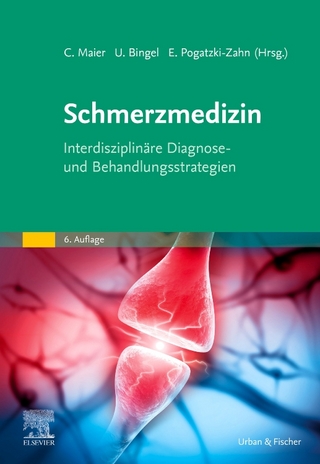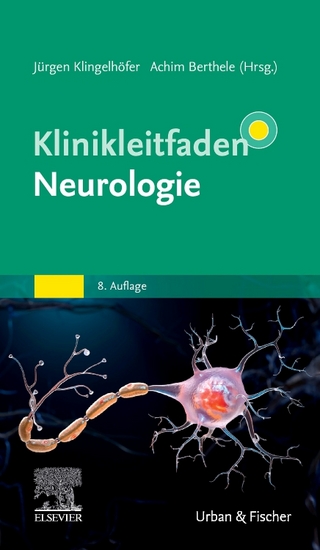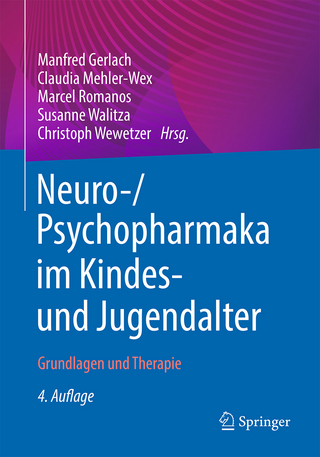
Tan's Practical Manual of Physical Medicine and Rehabilitation
Elsevier - Health Sciences Division (Verlag)
978-0-323-81277-1 (ISBN)
- Noch nicht erschienen (ca. November 2025)
- Versandkostenfrei innerhalb Deutschlands
- Auch auf Rechnung
- Verfügbarkeit in der Filiale vor Ort prüfen
- Artikel merken
Reflects the most recent clinical practice guidelines and evidence-based medicine for the management of acute and chronic pain, spasticity, neurogenic bowel and lower urinary tract dysfunctions, venous thromboembolism, cardiovascular and chronic lower respiratory problems, and other basic PM&R problems.
Uses a unique and comprehensive outline format with numerous acronym mnemonics to facilitate understanding of each topic and their practical application.
Features new, updated, and expanded tables, boxes, algorithms, and figures.
Includes fully expanded and updated chapters on joint and soft tissue injections and viscosupplementations; trigger point injections; therapeutic modalities and exercises; orthotics, prosthetics, gait aids, and robotics; wheelchairs; pharmacologic agents; neurogenic communication disorders; dysphagia; sexuality dysfunctions; immobility and hospital-associated deconditioning; pressure injuries, chronic wounds, and burns; work-related musculoskeletal conditions, and much more.
Covers the latest diagnostic tests and functional assessment instruments, including the Continuity Assessment Record and Evaluation (CARE) scale.
An eBook version is included with purchase. The eBook allows you to access all of the text, figures and references, with the ability to search, customize your content, make notes and highlights, and have content read aloud. Additional digital ancillary content may publish up to 6 weeks following the publication date.
Jackson Tan, MD, PhD, PT, trained at the Rusk Institute of Rehabilitation Medicine, New York University Langone Medical Center, New York City, NY. He is the sole author of the first and second editions of Practical Manual of Physical Medicine and Rehabilitation. He has authored and co-authored 19 other scientific publications related to Physical Medicine and Rehabilitation. Michelle Stern, MD, trained at the Rusk Institute of Rehabilitation Medicine, New York University Langone Medical Center, New York City, NY. She is one of the 29 peer-reviewers of the 2nd edition of Practical Manual of Physical Medicine and Rehabilitation. She has authored and co-authored 24 other scientific publications related to Physical Medicine and Rehabilitation
Part 1: PM&R Clinical Evaluation
Chapter 1.1 Clinical Evaluation and Documentation
Part 2: PM&R Diagnostic Tests
Chapter 2.1 Laboratory Tests - under segment 3 (Rheumatologic Laboratory Testing), the new test for cyclic citrullinated peptide (CCP) will be added.
Chapter 2.2 Noninvasive Imaging Studies
Chapter 2.3 Invasive Imaging Studies
Chapter 2.4 Electrodiagnostic Tests
Chapter 2.5 Musculoskeletal and Work-Related Tests
Chapter 2.6 Pulmonary Function Tests
Chapter 2.7 Exercise Tolerance Testing
Chapter 2.8 Functional Assessment Instruments - under segment 2 (FAIs measuring activities of daily living plus functional communication and social cognition), the new Quality Indicators (to replace the Functional Independence Measure) will be added as recommended by the US Centers for Medicare and Medicaid.
Chapter 2.9 Psychologic Tests
Part 3: PM&R Differential Diagnoses
Chapter 3.1 Differential Diagnoses of Pain
Chapter 3.2 Differential Diagnoses of Nonpain Problems
Part 4: PM&R Management Tools - new chapter on regenerative therapy will be added.
Chapter 4.1 Physical Modalities
Chapter 4.2 Therapeutic Exercises
Chapter 4.3 Orthoses -- will include new concepts and new material, such as myomo or "my own motion" orthoses.
Chapter 4.4 Prostheses -- will include new concepts and new materials, such as use of LiteGait and robotics prosthetics.
Chapter 4.5 Adaptations for Activities of Daily Living
Chapter 4.6 Gait Aids and Gait Patterns
Chapter 4.7 Manual and Powered Mobililty Systems
Chapter 4.8 Pharmacologic Agents -- The segment on analgesics will be completely revamped to remove discontinued drugs (such as Darvocet, Vioxx, Bextra) and add new opioid long-acting drug formulations (such as Xtampza-ER, Nucynta-ER, Hysingla-ER). The segment on Parkinson's disease drugs will include Parkinson's-related hallucinations & delusions drugs (e.g., pimavanserin). All other pharmacological segments, including anticonvulsants, psychotropic drugs, hematological agents (e.g., anticoagulant and antiplatelet drugs), bone-metabolism regulators (e.g., osteoporosis drugs) will be fully updated. For example, under psychotropic drugs, 2 new segments will be added: a segment on selective serotonin and norepinephrine reuptake inhibitors (SNRI), which include milnacipran for the management of fibromyalgia; and a segment on drugs for treatment of pseudobulbar affect, such as Nuedexta, which is a combination of dextromethorphan hydrobromide and quinidine. We will also add the following 2 new segments:
Multiple sclerosis (MS) drugs, i.e., injectable MS medications (such as interferon beta-1a and 1b, peginterferon beta-1a, glatiramer acetate), oral MS medications (such as teriflunomide, fingolimod, cladribine, siponimod, and dimethyl fumarate); and infused MS medications (such as alemtuzumab, mitoxantrone, ocrelizumab, and natalizumab); and
Rheumatoid arthritis (RA) drugs, i.e., disease-modifying antirheumatic drugs or DMARDs (such as hydroxychloroquine, leflunomide, methotrexate, sulfasalazine, and minocycline); injectable RA drugs (such as abatacept, rituximab, tocilizumab, anakinra, adalimumab, etanercept, infliximab, certolizumab pegol, and golimumab; and Janus associated kinase inhibitors (such as tofacitinib and baricitinib).
Chapter 4.9 Joint and Soft Tissue Injections
Chapter 4.10 Nerve Blocks
Chapter 4.11 Trigger Point Injections
Chapter 4.12 Regenerative Therapy (new chapter) including use of platelet rich plasma injections and stem cells injections.
Part 5: PM&R Basic Problems- new chapter on traumatic brain injury will be added.
Chapter 5.1 Deconditioning
Chapter 5.2 Pressure Ulcers and Wounds (expanded) - This chapter will be expanded to include wound management in amputees and diabetics
Chapter 5.3 Venous Thromboembolism -- will be completely revised to include the latest CHEST Guideline for antithrombotic therapy for venous thromboembolisms from the American College of Cardiology. It will also include the addition of non-vitamin K oral anticoagulants (NOAC) and direct oral anticoagulants (DOAC), such as dabigatran, rivaroxaban, apixaban, and edoxaban.
Chapter 5.4 Spasticity
Chapter 5.5 Neurogenic Communication Disorders
Chapter 5.6 Dysphagia
Chapter 5.7 Voiding Dysfunctions
Chapter 5.8 Bowel Dysfunctions
Chapter 5.9 Problems in Human Sexuality
Chapter 5.10 Acute and Chronic Pain -- will be completely revised to include new approach in pain management due to the opioid crisis. There will be a segment on random drug testing (urine and blood) and on management of opioid overdose and addiction.
Chapter 5.11 Work-Related Musculoskeletal Problems
Chapter 4.12 Chronic Pulmonary Problems
Chapter 4.13 Cardiac Problems
Chapter 4.14 Traumatic Brain Injury (TBI) (new chapter) including management mild TBI (concussion) to severe TBI (with extended period of unconsciousness or amnesia).
Part 6: PM&R Appendices ONLINE ONLY - The laboratory reference values will be deleted because every laboratory has its own reference values that is included in the laboratory report. New appendices on ASIA classification for spinal cord injury, spinal cord injury syndromes, and stroke syndromes will be added.
Appendix A:
A-1 Average range of motion for the cervical spine and upper limbs.
A-2 Average range of motion for the lumbar spine and lower limbs.
A-3 Reference values for motor nerve conduction studies .
A-4 Reference values for sensory nerve conduction studies.
A-5 Reference values for F-wave studies.
A-6 Summary of typical findings of needle electromyography in normal muscle and in neurogenic and myogenic lesions.
Appendix B:
B-1 Sensory distribution of major peripheral nerves and dermatomes (anterior view).
B-2 Sensory distribution of major peripheral nerves and dermatomes (posterior view).
B-3 Diagram of motor innervation of the upper limb showing branches of the musculocutaneous and median nerves.
B-4 Diagram of motor innervation of the upper limb showing branches of the ulnar nerve.
B-5 Diagram of motor innervation of the upper limb showing branches of the axillary and radial nerves.
B-6 Diagram of motor innervation of the lower limb showing branches of the femoral, obturator, and common peroneal nerves.
B-7 Diagram of the brachial plexus.
B-8 Diagram of the lumbosacral plexus.
B-9 Superficial muscles of the trunk, anterior view.
B-10 Superficial muscles of the trunk, posterior view.
B-11 Muscles of the upper limbs.
B-12 Muscles of the lower limbs.
Appendix C Normal x-rays of the head, spine, and limbs
Appendix D Normal MRI of the brain (axial view)
Appendix E Normal MRI of the brain (sagittal view)
Appendix F Normal MRI of the cervical spine
Appendix G Normal MRI of the lumbar spine
Appendix H ASIA classification for spinal cord injury (new appendix)
Appendix I Spinal cord syndromes (new appendix)
Appendix J Stroke syndromes (new appendix)
| Erscheinungsdatum | 05.03.2024 |
|---|---|
| Verlagsort | Philadelphia |
| Sprache | englisch |
| Maße | 152 x 229 mm |
| Gewicht | 450 g |
| Themenwelt | Medizin / Pharmazie ► Medizinische Fachgebiete ► Neurologie |
| Medizin / Pharmazie ► Physiotherapie / Ergotherapie ► Rehabilitation | |
| ISBN-10 | 0-323-81277-5 / 0323812775 |
| ISBN-13 | 978-0-323-81277-1 / 9780323812771 |
| Zustand | Neuware |
| Informationen gemäß Produktsicherheitsverordnung (GPSR) | |
| Haben Sie eine Frage zum Produkt? |
aus dem Bereich


